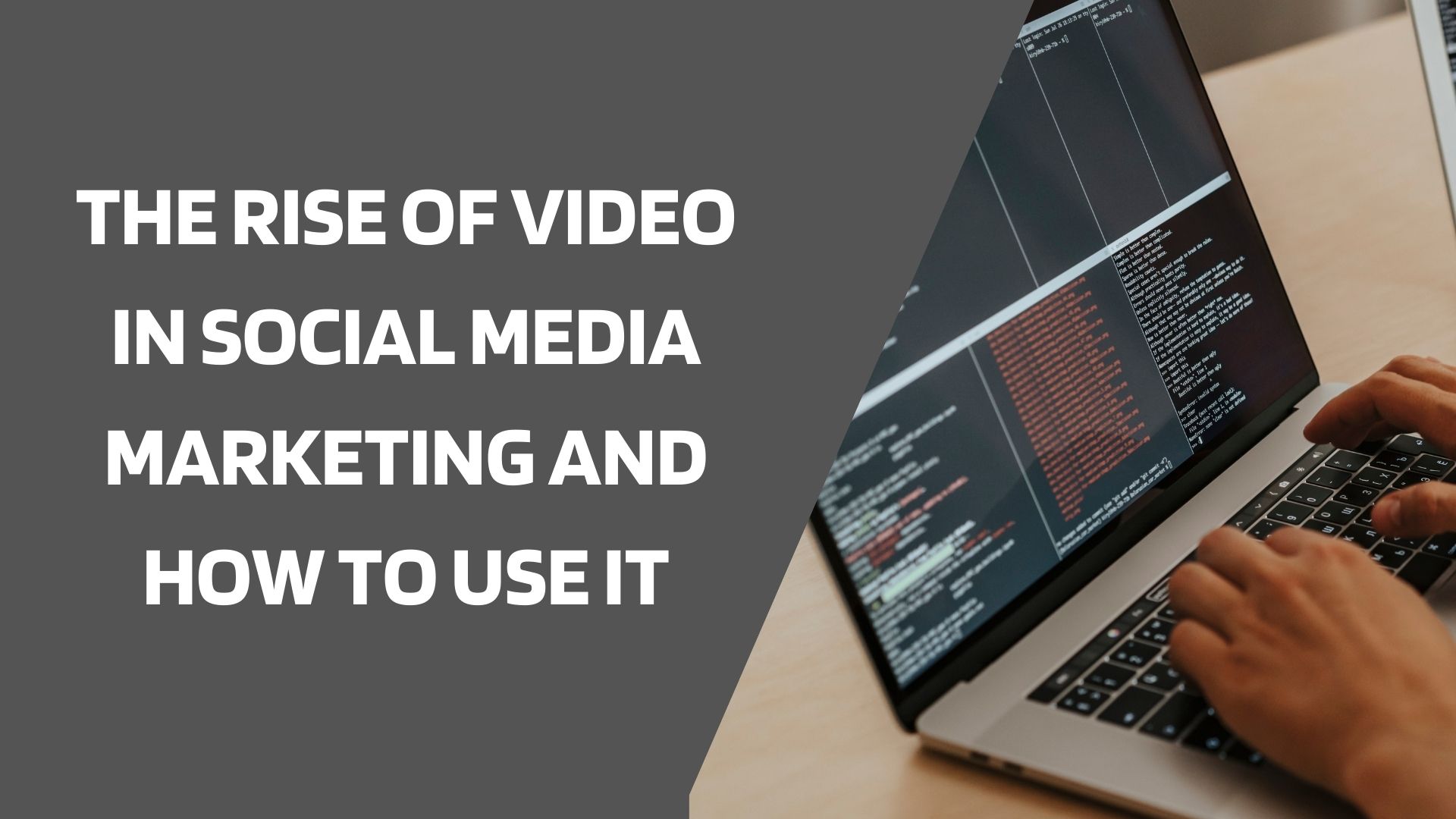In today’s fast-paced digital landscape, one trend has emerged as a game-changer for brands and marketers alike: video content. With social media platforms continuously evolving to meet the demands of their users, video has become one of the most effective tools in marketing strategies. The rise of video in social media marketing is undeniable, and understanding how to leverage its power can help businesses increase engagement, drive traffic, and build brand loyalty. In this article, we will explore why video has become such a dominant force in social media marketing and provide practical insights on how to effectively use video to enhance your marketing efforts.
The Evolution of Video in Social Media Marketing
Video content on social media is not a new concept, but its dominance has steadily increased over the past decade. Historically, social media platforms like Facebook, Instagram, and Twitter began with text and image-based posts, with videos often relegated to secondary roles. However, as user behavior shifted and internet speeds improved, platforms began to prioritize video content, recognizing its ability to capture attention and communicate messages more effectively.
With the advent of platforms like TikTok, YouTube Shorts, and Instagram Reels, short-form video content has exploded in popularity. Social media users now expect fast, dynamic, and engaging video content, and brands are increasingly capitalizing on this trend. Video allows businesses to tell stories, showcase products, engage with followers in real-time, and communicate their brand’s values in a way that static images or text posts cannot.
Why Video Has Taken Over Social Media Marketing
- Enhanced Engagement and Visibility One of the most compelling reasons to incorporate video into your social media marketing strategy is its ability to drive engagement. Videos have higher interaction rates than text or image posts, with statistics showing that social media posts with videos are more likely to be shared, liked, and commented on. Platforms like Facebook, Instagram, and LinkedIn also tend to prioritize video content in their algorithms, increasing its organic reach.
- Capturing Attention In a world filled with distractions, grabbing the attention of social media users has become increasingly difficult. Video content is highly effective in this regard because it combines visuals, sound, and motion to capture the viewer’s attention quickly. Research shows that social media users are more likely to stop scrolling when they encounter video content, making it an ideal medium for driving awareness.
- Improved Retention Videos tend to have a higher retention rate compared to other forms of content. People are more likely to watch an entire video, especially if it’s short and engaging. This provides an opportunity for brands to deliver key messages or calls-to-action (CTAs) that may be missed in shorter text-based posts.
- Versatility and Creativity Video is one of the most versatile content types available, offering numerous ways to engage with an audience. From live streaming events to tutorial videos, behind-the-scenes footage, product demonstrations, and influencer collaborations, the possibilities for creative video content are endless. Brands can experiment with different video styles to see what resonates best with their audience.
- Increased Conversions Studies have shown that video content can significantly boost conversion rates. For example, including a product video on a landing page can increase the chances of making a sale. Additionally, explainer videos and customer testimonials have been proven to enhance trust and influence purchasing decisions.
Types of Video Content to Use in Social Media Marketing
To make the most of video marketing, businesses should diversify their content and experiment with different video formats. Here are some popular types of video content that can elevate your social media marketing strategy:
Explainer Videos
Explainer videos are short, informative videos that break down complex ideas, services, or products in an easy-to-understand format. These videos are excellent for showcasing how your product works, highlighting its features, and demonstrating its benefits. Explainers are often used by tech companies, SaaS brands, and startups.
Product Demos and Tutorials
Product demonstrations or how-to tutorials allow you to show your product in action and provide valuable information to your audience. These types of videos can help potential customers understand how to use your product and resolve any doubts they might have, ultimately influencing their purchasing decision.
Behind-the-Scenes (BTS) Content
Behind-the-scenes videos provide a personal and authentic look at your company, offering a glimpse into your workplace culture, production processes, or day-to-day operations. BTS content can humanize your brand and create a deeper connection with your audience by showcasing your team, values, and efforts.
User-Generated Content (UGC)
Encouraging your customers or followers to create videos featuring your products is an excellent way to build social proof. User-generated content fosters authenticity and trust, as people are more likely to believe recommendations from other customers than from the brand itself.
Live Streams
Live streaming is one of the most powerful ways to engage with your audience in real-time. Whether you’re hosting a Q&A session, launching a product, or broadcasting an event, live video provides an opportunity for immediate interaction, real-time feedback, and a sense of urgency that can drive conversions.
Influencer and Testimonial Videos
Collaborating with influencers or showcasing testimonials from satisfied customers can help build credibility and trust for your brand. Videos featuring influencers or real customer experiences can humanize your brand and encourage followers to engage with your products or services.
How to Effectively Use Video in Your Social Media Marketing Strategy
- Know Your Audience Before creating any video content, it’s essential to understand who your audience is and what kind of content they engage with. Are they more likely to watch short-form videos on TikTok, or are they more inclined to view longer, detailed videos on YouTube? Tailor your video strategy to match the preferences of your target audience.
- Optimize for Mobile With the rise of smartphones, the majority of social media content is consumed on mobile devices. Ensure that your video is optimized for mobile viewing by keeping it vertical (for platforms like Instagram Stories and TikTok), ensuring it loads quickly, and including captions for those who watch with the sound off.
- Keep It Short and Sweet Attention spans are shorter than ever, so it’s important to keep your videos concise. For platforms like Instagram Reels, TikTok, and Twitter, aim for videos that are 15-30 seconds long. Longer videos can work well on platforms like YouTube and Facebook, but they should still maintain engagement throughout.
- Focus on Storytelling Effective video marketing is all about storytelling. Whether you’re showcasing a product, telling your brand’s story, or sharing a customer’s experience, weaving a compelling narrative into your video content will keep your audience engaged and invested.
- Include Clear Calls-to-Action (CTAs) Videos are a great way to guide your audience toward a desired action. Whether it’s directing them to your website, encouraging them to like or share the video, or asking them to subscribe to your channel, always include a clear and concise CTA in your video.
- Analyze Performance and Iterate After posting your videos, track key performance metrics such as views, engagement, click-through rates, and conversions. Use these insights to determine which types of videos resonate most with your audience, and iterate on your strategy accordingly.
Conclusion
The rise of video in social media marketing is a testament to its power in capturing attention, engaging audiences, and driving results. By understanding the various types of video content and how to effectively integrate video into your marketing strategy, businesses can harness the full potential of this dynamic medium. As social media platforms continue to evolve, video will undoubtedly remain at the forefront of digital marketing strategies. So, if you’re not already using video to promote your brand, now is the time to start—and make sure you’re leveraging its power to stay ahead of the competition.



